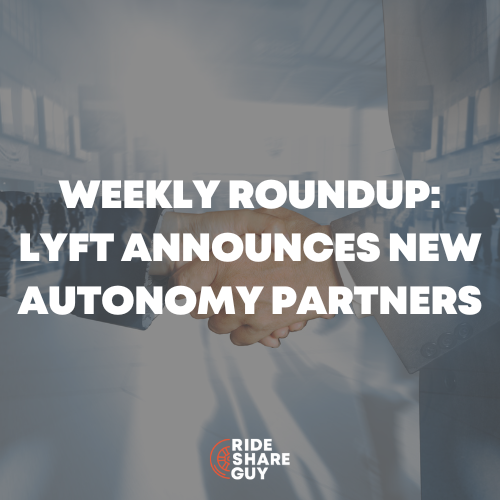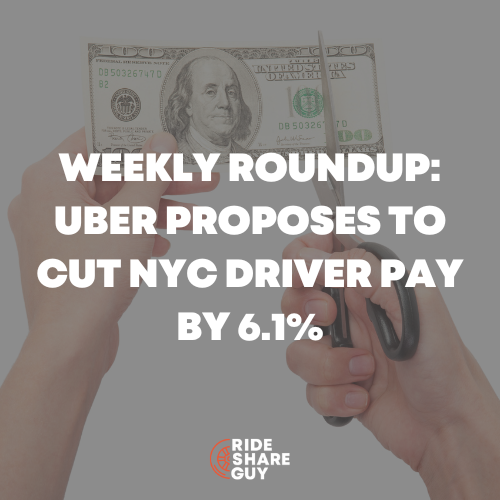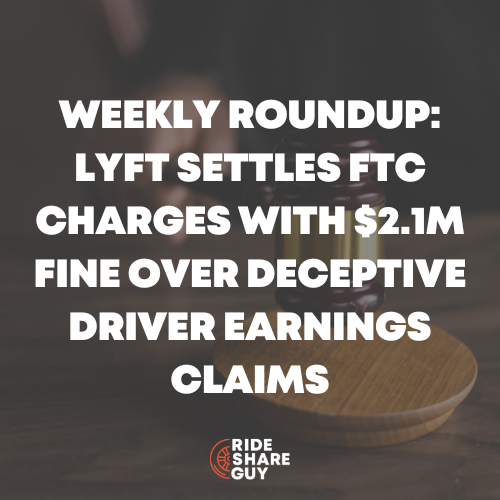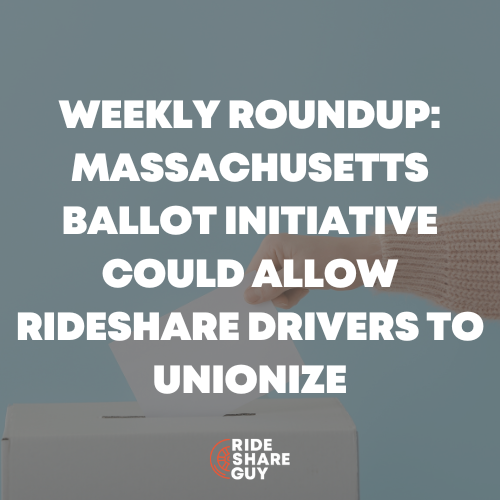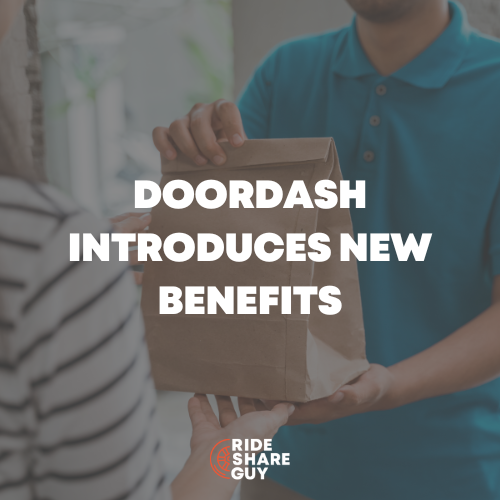In this week’s Roundup, we look at DoorDash’s efforts to address dangerous driving, Uber and Lyft drivers protesting app lockouts, the impact of NYC’s minimum-wage law on food delivery fees, and a study revealing how Uber Eats has cannibalized Uber and Lyft’s rideshare businesses. We break it all down for you.
DoorDash Ramps Up Efforts to Curb Dangerous Driving, Fake Accounts Amid City Complaints
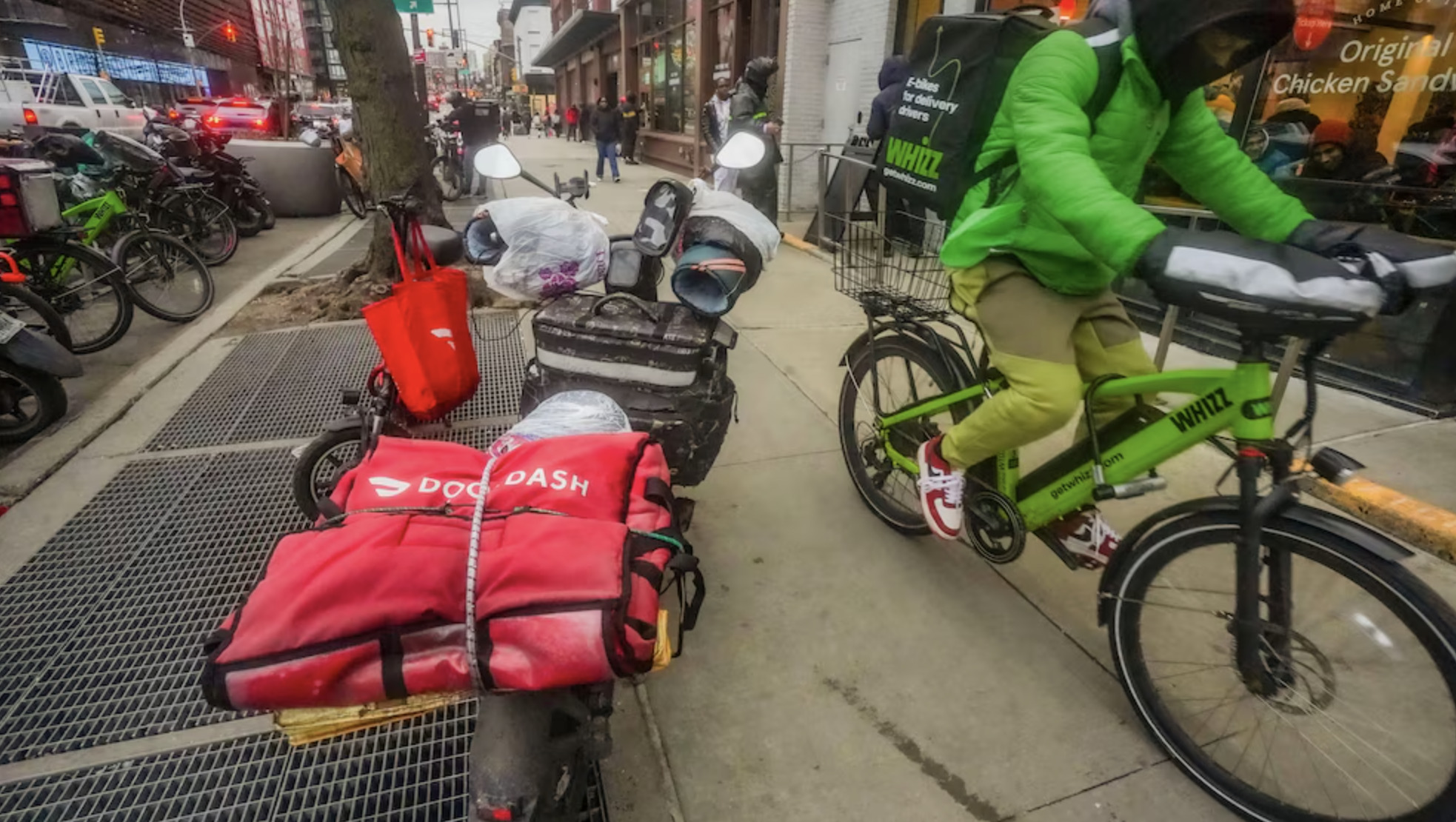
SOURCE – ABC News
DoorDash announced on Tuesday that it is intensifying its efforts to identify and remove dangerous delivery drivers and fake accounts from its platform.
The company will also require drivers to submit real-time selfies more frequently to confirm their identities during deliveries, which is intended to cut down on the proliferation of fake accounts operating on the platform.
- In response, DoorDash has established a dedicated point of contact for the Boston Police Department to streamline the process of requesting drivers’ records. The company also stated that it would consider removing drivers from the platform if police report traffic law violations.
- The move comes after Boston officials sent a letter to DoorDash and other food delivery companies last month, expressing concern over the increasing number of delivery workers operating motorcycles, mopeds, and motorized scooters in an unlawful and dangerous manner.
- This news also comes as some delivery drivers are complaining about earnings on the platforms, which has also been caused by an oversaturation of delivery workers, many using fake accounts.
Rideshare Drivers In New York City Protest App Lockouts, Demand Fair Compensation
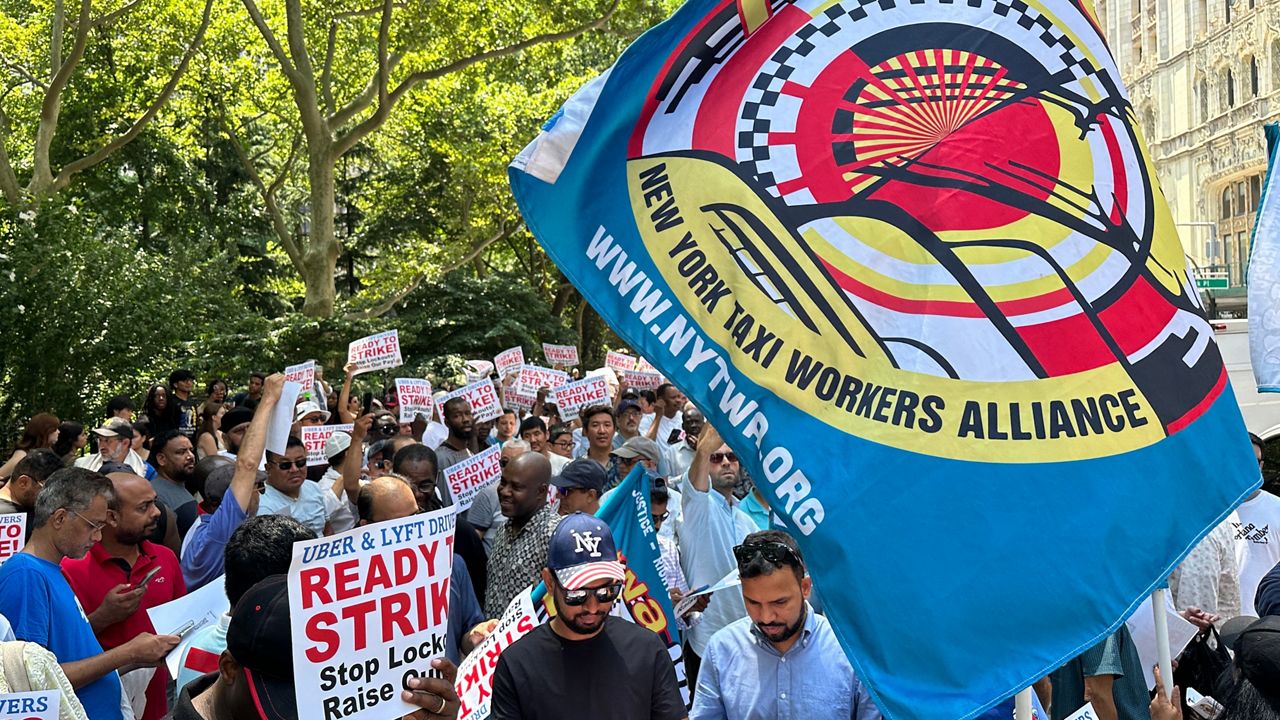
SOURCE – NY1
Hundreds of rideshare drivers rallied in Manhattan, New York City on Wednesday, protesting being locked out of the Uber and Lyft apps during their shifts.
The drivers, backed by the New York Taxi Workers Alliance, accused the companies of costing them hundreds of dollars each week by not compensating them for the time spent waiting for dispatches, as required by city regulations.
- The Taxi and Limousine Commission (TLC) recently adjusted the pay formula for the apps to account for this “empty time component.” However, drivers claim that Uber and Lyft are concealing the actual amount of empty time to avoid paying them more.
- Advocates blame the companies and the TLC for mismanaging the platforms and over-hiring drivers, leading to a crisis of oversaturation. Uber and Lyft have responded, citing issues with the current pay formula and industry-wide regulations.
- The TLC has acknowledged the drivers’ concerns and pledged to take action if the rideshares don’t address the issue promptly. Drivers plan to continue their protests, threatening to escalate to a full-blown strike if their demands for fair compensation are not met.
New York City Sees 58% Surge in Food-Delivery Fees Following Minimum-Wage Law
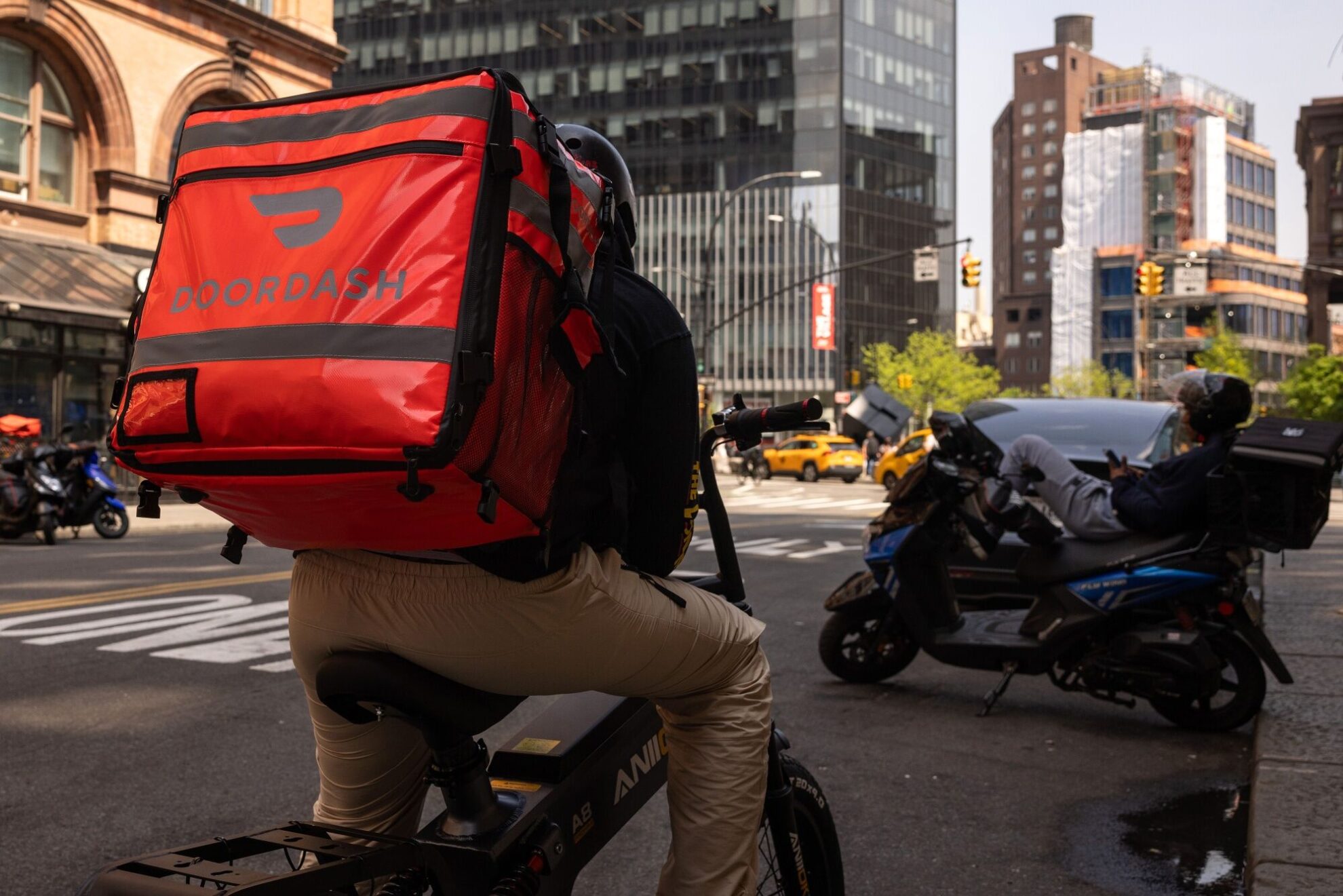
SOURCE – Bloomberg
A report released by the New York City Department of Consumer and Worker Protection (DCWP) on Thursday revealed that New Yorkers have paid 58% more in food-delivery fees since the implementation of a minimum-wage law for delivery workers in late 2023.
The report suggests that restaurant-delivery services like Uber Eats, DoorDash, and Grubhub have passed on the majority of the increased costs to customers, with people paying an average of $20.1 million per week in delivery fees during the first quarter of 2024.
- In contrast, participating restaurants saw a 13% increase in fees over the same period. While the minimum wage rule led to a 64% increase in delivery workers’ overall earnings, tips declined by 60%.
- The number of contractors delivering food also fell by 9% in the first quarter compared to the previous year. Representatives from Uber Eats, Grubhub, and DoorDash argue that the decline in the number of workers proves that the minimum-pay model is not effective, with Uber claiming that the rule has led to fewer workers and increased workload for remaining couriers.
- However, the report suggests that orders have been broadly increasing, with delivery workers completing about 2.8 million deliveries per week in the first three months of the year, an 8% jump from the same period a year earlier.
Uber Eats Growth Cannibalizes Uber and Lyft’s Rideshare Business, Study Finds
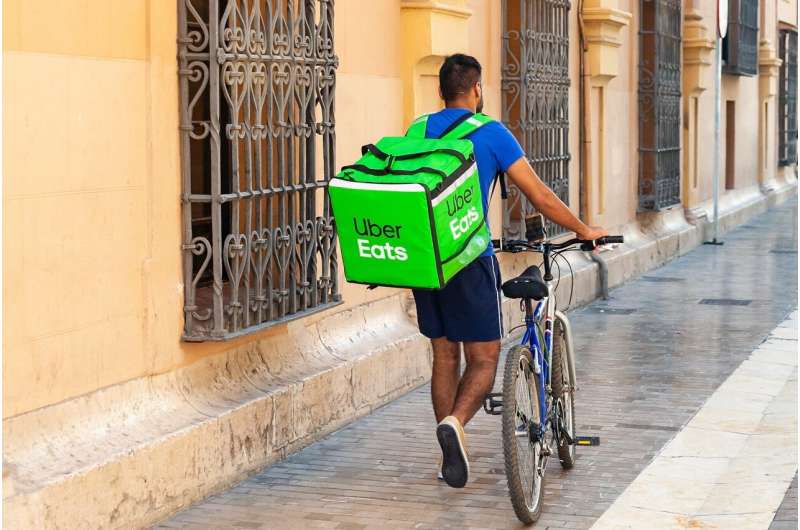
SOURCE – Phys.org
A recent study by researchers from the University of Michigan’s Ross School of Business has revealed that the explosive growth of Uber Eats since its launch in 2016 has come at a cost to Uber’s core rideshare business, as well as that of its competitor, Lyft.
The study, which analyzed data from New York City’s rideshare and food delivery markets, found that a 1% increase in local restaurants joining Uber Eats led to a 2% decrease in Uber trips and a nearly 7% decrease in Lyft trips.
- This decline in rideshare volumes is attributed to drivers switching between the two services to maximize their earnings, leading to longer wait times for riders and potentially causing them to leave the platform.
- Lyft also suffered from Uber Eats’ impact, as the launch of the food delivery service made it easier for Uber drivers to manage their time between ridesharing and food delivery, reducing the coordination costs associated with juggling multiple apps.
- As a result, some Lyft drivers may have switched to working on Uber and Uber Eats, contributing to the drop in Lyft’s rideshare volume. The researchers estimate that the launch of Uber Eats cost Uber $10 million in annual revenue loss and Lyft $4 million in Manhattan alone.
Is Uber’s Upfront Fares Algorithm Pricing Trips Correctly?
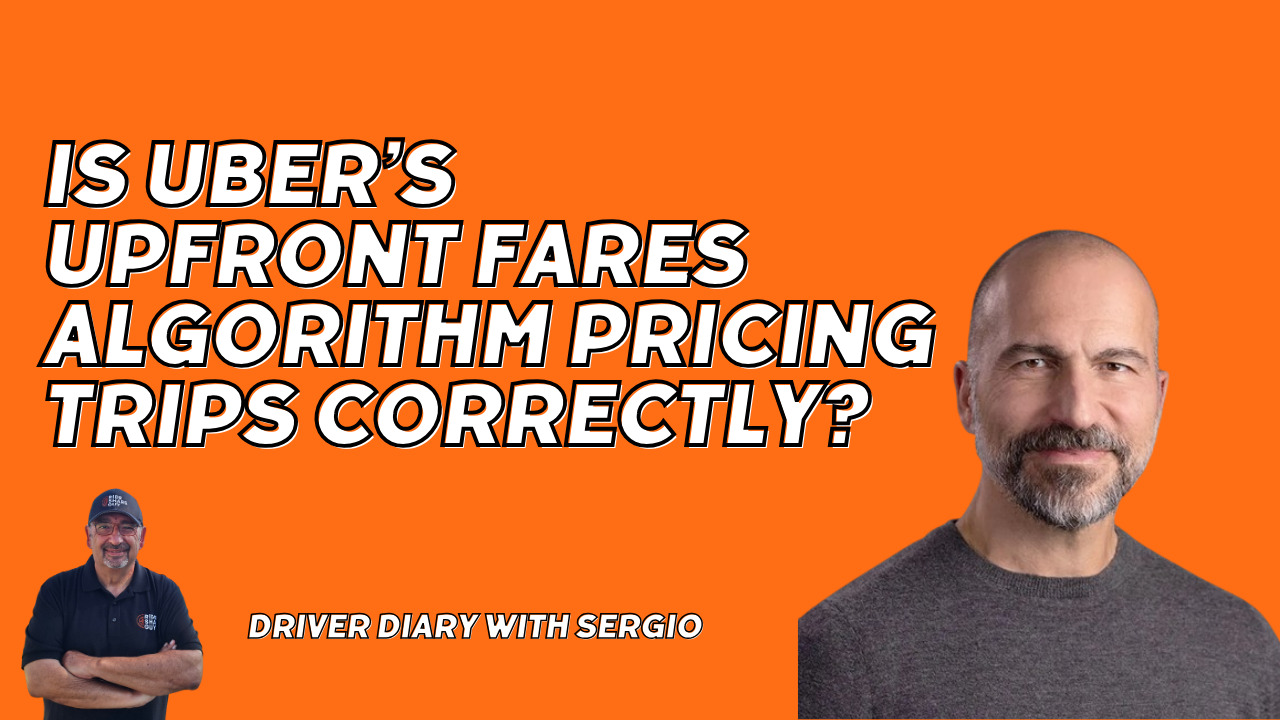
SOURCE – YouTube
RSG Senior Contributor, Sergio Avedian, is getting to the bottom of a growing issue for Uber: driver acceptance rates. You can watch Part 1 and Part 2 of the series here.
These rates have a direct correlation with driver pay, as more and more drivers employ strategies to maximize earnings. Uber’s TOS, per independent contractor law, cannot remove you from the platform for rejecting trips.
This means more drivers are declining trips that aren’t worth their time. In this episode, he explores whether the algorithm is pricing trips correctly, specifically after four years of inflation where driver costs have gone through the roof.
Is it time for the rate card to come back and get rid of upfront fares? Does this mean drivers will need to sacrifice being able to see the destination?
QUICK HITS
DoorDash has reportedly introduced waitlists for new drivers in San Francisco and other regions of the Bay Area, California, presumably as a measure to address the oversaturation of drivers on the platform and the resulting decline in earnings. – KTVU
Uber has been ordered to pay $10,000 in damages to an Australian driver after permanently banning him based on a passenger complaint without sufficient evidence of a breach in its code of conduct. – The Guardian
Uber is introducing a new tool that displays average wait times and costs for rides in 10K+ cities. The average wait times and prices are based on recent historical aggregated data of Uber trips, both on-demand and reserved, within that city – CNBC
On the latest episode of The Rideshare Guy Podcast, RSG founder Harry Campbell interviews Nikhil Goel, Chief Commercial Officer of Archer (and co-founder of Uber Elevate), about Archer’s mission to revolutionize urban air mobility with electric vertical takeoff and landing aircraft. – YouTube
Must Listen Or Watch RSG Content
Here are this week’s featured podcast episode and YouTube videos:
- RSG258: Rideshare In The AIR With Nikhil Goel From Archer
- Trip Radar: Rejects, FOMO, Hunger Games, Unsafe? | Driver Diary with Sergio
- 10 Lessons Learned Driving 10 Years of Uber & Lyft!
- Uber LOWERING Rates And RAISING Service Fees
- The Rideshare Guy en Español
- Make sure you Subscribe so you don’t miss out on future conversations and interviews!
